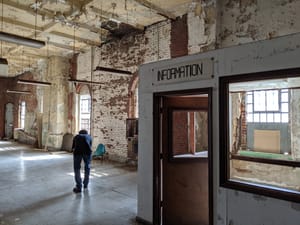Quantity has a quality all its own. A focus on quality is one reason that libraries, archives and museums have not moved their collections in large quantities to the web. This reduces their visibility and impact as the web becomes central to research, learning and civic engagement. Scale matters, and fragmented small-scale activities do not map well onto behaviors in a web environment.
Our intricate attempts to describe and present a few choice collections have resulted in expensive, but little-used websites. And the rest of our collections remain largely invisible.
We need to stop thinking of our lovingly crafted sites, designed specifically for a particular collection, as the only way people will discover our content. While researchers value the description and organization that we bring to collections, they don’t want to have to consult dozens of specialized sites to find what they need. [Shifting Gears: Gearing Up to Get Into the Flow [PDF]]
These words are from a brief and provocative report [PDF] about special collections and digitization just written by my Programs colleagues Ricky Erway and Jen Schaffner. The report is based on speaker suggestion and enthusiastic audience reaction at a forum convened in August as part of an RLG Programs project called Bringing special collections into the large-scale digitization milieu.
The report discusses how current practices will need to change if this activity is indeed to be scaled up in the ways that are discussed. The report presents key areas where assumptions must change if we are to make progress.
Scaling up digitization of special collections (here defined as non-book collections, such as photographs, manuscripts, pamphlets, minerals, insects, or maps) will compel us to temper our historical emphasis on quality with the recognition that large quantities of digitized special collections materials will better serve our users. This will require us to revisit our procedures and policies. Should we be digitizing for both preservation and access, or optimizing procedures primarily for access? How can our selection approaches help us maximize both throughput and impact? Have projects produced reusable infrastructures? What is the appropriate level of description for online materials? How can we make smart partnership agreements in order to build a collective collection that will be valued by a broad audience? [Shifting Gears: Gearing Up to Get Into the Flow [PDF]]
Materials from the forum are also available: Digitization matters: Breaking through the barriers—scaling up digitization of special collections, an event co-sponsored by RLG Programs, the Society of American Archivists, and the Newberry Library.
Read the report and leave a comment on the RLG Programs’ blog.



